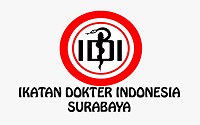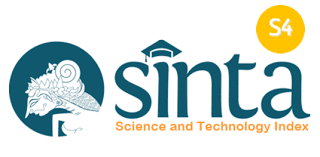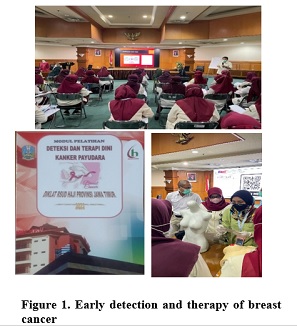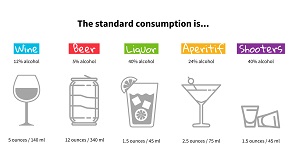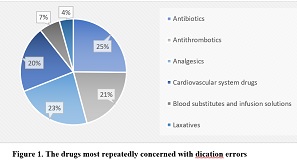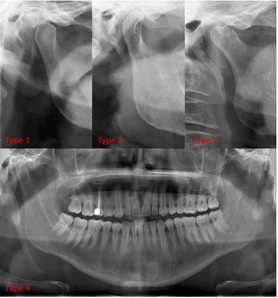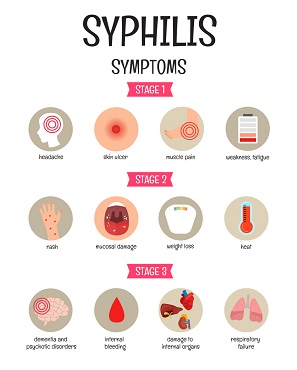Maternal Reason for Choosing Caesarean Section at Won Request and Without Medical Indication : A Literature Review
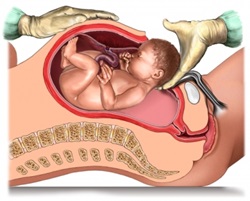
New research from the World Health Organization (WHO) shows that the incidence of caesarean sections in childbirth continues to increase globally, accounting for more than 1 in 5 (21%) of all births. Although there is a considerable amount of literature on complications following caesarean section, the demand for caesarean section without medical indication and at maternal request is increasing. This study aimed to identify the reasons why mothers choose to have a caesarean section without a medical indication. Mothers may choose to have a caesarean section due to fear of vaginal delivery, concerns about perceived health risks, previous traumatic childbirth experiences, worries about future sexual life, positive attitudes towards the caesarean section, and the decision-making process. It can be concluded that many expectant mothers are not adequately prepared for this process. Tackling this problem requires collaboration between different stakeholders. WHO has recommended guidelines for non-clinical interventions to reduce unnecessary caesarean sections, targeting women, health professionals and health organizations, facilities, or systems.
INTRODUCTION
Pregnancy and childbirth are important stages in a woman’s life. Providing them with high-quality care allows them to have the best possible outcomes. New research from the World Health Organization (WHO) shows that incidence of caesarean sections in childbirth continues to increase globally, accounting for more than 1 in 5 (21%) of all births11. Although there is evidence indicating that vaginal birth is more safe and associated with lower complications than giving birth by caesarean section22. This number is expected to increase nearly 1 in 3 (29%) by 203033. The World Health Organization (WHO) recommends that the average caesarean section rate in a country should be around 5-15 percent per 1000 global births. According to data from the Indonesian Demographic and Health Survey (SDKI), the incidence of caesarean section in Indonesia was 17,6%44. This rate is significantly higher than the acceptable rate recommended by the World Health Organization (WHO).
In the past, caesarean section was only used for emergencies. Now, caesarean section is considered a safe procedure due to the improvement in health care, and caesarean section indications have increased over the years55. However, for both mothers and babies caesarean section carries risks related to labor and anesthesia as well as short and long-term health problems when performed without medical necessity1,6–81678.
Although there is a considerable amount of literature on complications following caesarean section, the demand for caesarean section without medical indication and at maternal request is increasing. This presents a significant challenge to the healthcare system and has sparked a global debate. The rate of elective caesarean deliveries for nonmedical reasons, such as maternal request, has been estimated to range from 4% to 18% worldwide99. The maternal request will depend not only on her own opinion but also on the viewpoint of physicians and healthcare organizations, while a mother's request is primarily because of the psychological reason1010. The high incidence of elective caesarean section surgery at the maternal request and without medical indication, suggests a need for further evaluation of worldwide maternal and child healthcare systems. Safe delivery is a universal requirement, and the high cost and safety concerns associated with this birth method make it imperative to address this issue.
This study aimed to identify the reasons why mothers choose to have a caesarean section without a medical indication. This will hopefully lead to developing strategies to reduce unnecessary caesarean sections and thus reduce mortality and morbidity.
OVERVIEW
Caesarean section is the delivery of a fetus through an open incision in the abdomen (laparotomy) and an incision in the uterus (hysterotomy)1111. Caesarean section on maternal request is a caesarean section performed at the request of the mother in the absence of obstetric contraindications to vaginal delivery. There are several reasons why mothers choose caesarean section at their request and without medical indication:
Fear of vaginal birth
Many women experience fear of vaginal birth from adolescence1212. They describe how they perceive based on negative live experiences of other women or social media stories1313. The concerns experienced by these women encompass anxiety regarding clinical procedures, potential complications, harm or distress to the baby, pain, and loss of control, the body's ability to give birth, physical changes in the mother during and after childbirth, and limited participation in decision-making14,151415. A similar study also found that fear of vaginal birth was the reason for choosing caesarean section with 60% of women reporting fear of childbirth1616. However, not all women who choose to have a caesarean delivery will have a caesarean delivery. A Dutch study found that 29.3% (17 cases) of nulliparous participants who were afraid of vaginal delivery preferred a caesarean section, but only 6 delivered1717. This is an indication that the preferences for the mode of birth can still be changed. According to a study of qualitative meta-analysis, women deal with fear by coping and seeking support1818. They confronted their fear by relying on their ability to give birth naturally. The fear dissipated as they became more involved in the birth process, receiving guidance and information from midwives about what to expect1818. Therefore, it is necessary to improve obstetricians' and midwives' communication and counseling techniques to help pregnant women to reduce their fear and manage their emotions.
Safety concerns about the perception of health risks
Some women reported concerns about their health and ability to deliver their babies due to perceived safety risks. The underlying diseases such as heart disease, diabetes mellitus, and HIV, as well as biological risks associated with advanced age and obesity1919. Additionally, they noted concerns about infertility and the perception of large babies resulting from maternal diabetes mellitus. Similarly, Eide et al. (2020) reported concerns among families regarding a history of prolonged labor, emergency caesarean section, narrow pelvis, and stillbirth2020. Research conducted in Iran on the incidence and determinants of caesarean section indicates that mothers over the age of 30, overweight or obese, with diabetes mellitus, and mothers with LBW between 3500-4000 also prefer elective caesarean section2121. Research conducted in Chile in 2020 found that elective caesarean section was chosen by women with a family
WHO. Caesarean section rates continue to rise, amid growing inequalities in access, https://www.who.int/news/item/16-06-2021-caesarean-section-rates-continue-to-rise-amid-growing-inequalities-in-access (2021).
Keag OE, Norman JE, Stock SJ. Long-term risks and benefits associated with cesarean delivery for mother, baby, and subsequent pregnancies: Systematic review and meta-analysis. PLOS Med 2018; 15: e1002494. DOI: 10.1371/journal.pmed.1002494
Betran AP, Ye J, Moller A-B, et al. Trends and projections of caesarean section rates: global and regional estimates. BMJ Glob Health 2021; 6: e005671. DOI: 10.1136/bmjgh-2021-005671
Ministry of Health, Republic of Indonesia. Hasil Utrama Riskesdas 2018. Jakarta: Badan Peelitian dan Pengembangan, https://kesmas.kemkes.go.id/assets/upload/dir_519d41d8cd98f00/files/Hasil-riskesdas-2018_1274.pdf (2018).
Dahlquist K, Stuart A, Källén K. Planned cesarean section vs planned vaginal delivery among women without formal medical indication for planned cesarean section: A retrospective cohort study of maternal short‐term complications. Acta Obstet Gynecol Scand 2022; 101: 1026–1032. DOI: 10.1111/aogs.14408
Li L, Wan W, Zhu C. Breastfeeding after a cesarean section: A literature review. Midwifery 2021; 103: 103117. DOI: 10.1016/j.midw.2021.103117
Huang L, Chen Q, Zhao Y, et al. Is elective cesarean section associated with a higher risk of asthma? A meta-analysis. J Asthma 2015; 52: 16–25. DOI: 10.3109/02770903.2014.952435
Cho CE, Norman M. Cesarean section and development of the immune system in the offspring. Am J Obstet Gynecol 2013; 208: 249–254. DOI: 10.1016/j.ajog.2012.08.009
Demontis R, Pisu S, Pintor M, et al. Cesarean section without clinical indication versus vaginal delivery as a paradigmatic model in the discourse of medical setting decisions. J Matern Fetal Neonatal Med 2011; 24: 1470–1475. DOI: 10.3109/14767058.2010.538279
Jenabi E, Khazaei S, Bashirian S, et al. Reasons for elective cesarean section on maternal request: a systematic review. J Matern Fetal Neonatal Med 2020; 33: 3867–3872. DOI: 10.1080/14767058.2019.1587407
Cunningham FG (ed). Williams obstetrics. 24th edition. New York: McGraw-Hill Medical, 2014. http://repository.stikesrspadgs.ac.id/44/1/Williams%20Obstetrics-1376hlm.pdf
Eide KT, Morken N-H, Bærøe K. Maternal reasons for requesting planned cesarean section in Norway: a qualitative study. BMC Pregnancy Childbirth 2019; 19: 102. DOI: 10.1186/s12884-019-2250-6
Faisal I, Matinnia N, Hejar AR, et al. Why do primigravidae request caesarean section in a normal pregnancy? A qualitative study in Iran. Midwifery 2014; 30: 227–233. DOI: 10.1016/j.midw.2013.08.011
Elgzar WT, Alshahrani MS, Ibrahim HA-F. Mode of delivery preferences: the role of childbirth fear among nulliparous women. Front Psychol 2023; 14: 1221133. DOI: 10.3389/fpsyg.2023.1221133
Weeks FH, Sadler M, Stoll K. Preference for caesarean and attitudes toward birth in a Chilean sample of young adults. Women Birth 2020; 33: e159–e165. DOI: 10.1016/j.wombi.2019.03.012
Da Silva Charvalho P, Hansson Bittár M, Vladic Stjernholm Y. Indications for increase in caesarean delivery. Reprod Health 2019; 16: 72. DOI: 10.1186/s12978-019-0723-8
Sluijs A-M, Wijma K, Cleiren MPHD, et al. Preferred and actual mode of delivery in relation to fear of childbirth. J Psychosom Obstet Gynecol 2020; 41: 266–274. DOI: 10.1080/0167482X.2019.1708319
Wigert H, Nilsson C, Dencker A, et al. Women’s experiences of fear of childbirth: a metasynthesis of qualitative studies. Int J Qual Stud Health Well-Being 2020; 15: 1704484. DOI: 10.1080/17482631.2019.1704484
Suwanrath C, Chunuan S, Matemanosak P, et al. Why do pregnant women prefer cesarean birth? A qualitative study in a tertiary care center in Southern Thailand. BMC Pregnancy Childbirth 2021; 21: 23. DOI: 10.1186/s12884-020-03525-3
Eide KT, Morken N-H, Bærøe K. Tensions and interplay: A qualitative study of access to patient-centered birth counseling of maternal cesarean requests in Norway. Midwifery 2020; 88: 102764. DOI: 10.1016/j.midw.2020.102764
Zarshenas M, Zhao Y, Binns CW, et al. Incidence and Determinants of Caesarean Section in Shiraz, Iran. Int J Environ Res Public Health 2020; 17: 5632. DOI: 10.3390/ijerph17165632
Laopaiboon M, Lumbiganon P, Intarut N, et al. Advanced maternal age and pregnancy outcomes: a multicountry assessment. BJOG Int J Obstet Gynaecol 2014; 121: 49–56. DOI: 10.1111/1471-0528.12659
Marchi J, Berg M, Dencker A, et al. Risks associated with obesity in pregnancy, for the mother and baby: a systematic review of reviews. Obes Rev 2015; 16: 621–638. DOI: 10.1111/obr.12288
World Health Organization. Standards for improving quality of maternal and newborn care in health facilities. Geneva: World Health Organization, https://iris.who.int/handle/10665/249155 (2016, accessed 14 December 2023). https://iris.who.int/bitstream/handle/10665/249155/9789241511216-eng.pdf?sequence=1&isAllowed=y
Yildiz PD, Ayers S, Phillips L. The prevalence of posttraumatic stress disorder in pregnancy and after birth: A systematic review and meta-analysis. J Affect Disord 2017; 208: 634–645. DOI: 10.1016/j.jad.2016.10.009
Ryding EL, Lukasse M, Kristjansdottir H, et al. Pregnant women’s preference for cesarean section and subsequent mode of birth – a six-country cohort study. J Psychosom Obstet Gynecol 2016; 37: 75–83. DOI: 10.1080/0167482X.2016.1181055
Rodríguez-Almagro J, Hernández-Martínez A, Rodríguez-Almagro D, et al. Women’s Perceptions of Living a Traumatic Childbirth Experience and Factors Related to a Birth Experience. Int J Environ Res Public Health 2019; 16: 1654. DOI: 10.3390/ijerph16091654
Ayers S. Fear of childbirth, postnatal post-traumatic stress disorder and midwifery care. Midwifery 2014; 30: 145–148. DOI: 10.1016/j.midw.2013.12.001
Hatamleh R, Abujilban S, Al-Shraideh AJ, et al. Maternal request for cesarian birth without medical indication in a group of healthy women: A qualitative study in Jordan. Midwifery 2019; 79: 102543. DOI: 10.1016/j.midw.2019.102543
Dominoni M, Gritti A, Bergante C, et al. Genital perception and vulvar appearance after childbirth: a cohort
analysis of genital body image and sexuality. Arch Gynecol Obstet 2022; 307: 813–819. DOI: 10.1007/s00404-022-06826-4
Yeniel AO, Petri E. Pregnancy, childbirth, and sexual function: perceptions and facts. Int Urogynecology J 2014; 25: 5–14. DOI: 10.1007/s00192-013-2118-7
Maitanmi BT, Oluyomi OV, Aderemi IO, et al. Knowledge, attitude and perception of cesarean section among pregnant women attending antenatal clinic at Babcock University Teaching Hospital, Ilishan-Remo, Ogun State. J Matern Fetal Neonatal Med 2023; 36: 2278019. DOI: 10.1080/14767058.2023.2278019
Stoll K, Edmonds J, Sadler M, et al. A cross-country survey of attitudes toward childbirth technologies and interventions among university students. Women Birth 2019; 32: 231–239. DOI: 10.1016/j.wombi.2018.07.025
Deng R, Tang X, Liu J, et al. Cesarean delivery on maternal request and its influencing factors in Chongqing, China. BMC Pregnancy Childbirth 2021; 21: 384. DOI: 10.1186/s12884-021-03866-7
Elnakib S, Abdel-Tawab N, Orbay D, et al. Medical and non-medical reasons for cesarean section delivery in Egypt: a hospital-based retrospective study. BMC Pregnancy Childbirth 2019; 19: 411. DOI: 10.1186/s12884-019-2558-2
Panda S, Begley C, Daly D. Clinicians’ views of factors influencing decision-making for caesarean section: A systematic review and metasynthesis of qualitative, quantitative and mixed methods studies. PLOS ONE 2018; 13: e0200941. DOI: 10.1371/journal.pone.0200941
World Health Organization. WHO recommendations non-clinical interventions to reduce unnecessary caesarean sections. Geneva: World Health Organization, https://iris.who.int/handle/10665/275377 (2018, accessed 27 December 2023). https://iris.who.int/bitstream/handle/10665/275377/9789241550338-eng.pdf?sequence=1&isAllowed=y
Copyright (c) 2024 Gusna Pricilia Cipta Wardhani, Pudji Lestari

This work is licensed under a Creative Commons Attribution-ShareAlike 4.0 International License.
- The journal allows the author to hold the copyright of the article without restrictions.
- The journal allows the author(s) to retain publishing rights without restrictions.
- The legal formal aspect of journal publication accessibility refers to Creative Commons Attribution Share-Alike (CC BY-SA).
- The Creative Commons Attribution Share-Alike (CC BY-SA) license allows re-distribution and re-use of a licensed work on the conditions that the creator is appropriately credited and that any derivative work is made available under "the same, similar or a compatible license”. Other than the conditions mentioned above, the editorial board is not responsible for copyright violation.






